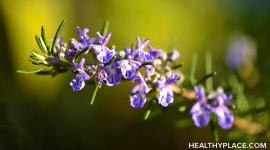Roman Chamomile

Chamomile is an alternative herbal treatment for anxiety and tension, various digestive disorders, muscle pain and spasm, and menstrual cramps. Learn about the usage, dosage, side-effects of Roman Chamomile.
Botanical Name:Chamaemelum nobile
Common Names: Roman Chamomile
- Overview
- Plant Description
- What's It Made Of?
- Available Forms
- How to Take It
- Precautions
- Possible Interactions
- Supporting Research
-----------------------------------------
There are two plants known as chamomile: the more popular German chamomile (Matricaria recutita) and Roman, or English, chamomile (Chamaemelum nobile). Both belong to the Asteraceae family, which also includes ragweed, echinacea, and feverfew. Both have been used traditionally to calm frayed nerves, to treat various digestive disorders, to relieve muscle spasms and menstrual cramps, and to treat a range of skin conditions (including minor first degree burns) and mild infections. Chamomile can also be found in a variety of face creams, drinks, hair dyes, shampoos, and perfumes.
Most research on chamomile has been done with the closely related plant, German chamomile, which has similar, but not identical, active ingredients. Roman chamomile has not been used in studies of people as much as German chamomile, so claims about its use for specific health conditions are based on clinical experience and will have to be verified through future research. Nevertheless, Roman chamomile is an ingredient in many teas, ointments, and other types of medicinal preparations.
Traditionally, Roman chamomile has been used to treat nausea, vomiting, heartburn, and excess intestinal gas that can happen when feeling nervous. It is widely valued for its tension-relieving properties. As legend has it, Peter Rabbit's mother used Roman chamomile tea to calm him down after his adventures in Mr. MacGregor's garden. This herb may also reduce inflammation associated with cuts or hemorrhoids, and may ease the discomfort associated with conditions such as eczema and gingivitis (swollen gums). The traditional uses of Roman chamomile, again while not studied scientifically are quite similar to the uses for German chamomile.
Plant Description
Roman chamomile originates in northwestern Europe and Northern Ireland, where it creeps close to the ground and can reach up to one foot in height. Gray-green leaves grow from the stems, and the flowers have yellow centers surrounded by white petals, like miniature daisies. It differs from German chamomile in that its leaves are thicker and it grows closer to the ground. The flowers smell like apples.
What's It Made Of?
Chamomile teas, ointments, and extracts all start with the white and yellow flower head. The flower heads may be dried and used in teas or capsules or crushed and steamed to produce a blue oil, which has medicinal benefits. The oil contains ingredients that reduce swelling and may limit the growth of bacteria, viruses, and fungi.
Available Forms
Roman chamomile is available as dried flowers in bulk, tea, tinctures, and in creams and ointments.
How to Take It
Pediatric
There are no known scientific reports regarding the appropriate pediatric dose of Roman chamomile. For this reason, children should not take this herb.
Adult
Roman chamomile can be taken a number of ways. A cup of hot chamomile tea may help soothe an upset stomach or help those who suffer from insomnia. The oral dosages listed below should help relieve stomach discomfort; chamomile has also been used for reducing menstrual pain and the swelling of gums in the case of gingivitis. The ointment and bath recommendations are for skin conditions.
- Tea: Pour one cup of boiling water over 1 heaping tablespoon of dried herb, steep 10 to 15 minutes.
- Liquid extract (1:1, 70% alcohol) 20 to 120 drops, three times per day
- Bath: Add two teabags or a few drops of Roman chamomile essential oil to a full tub of bathwater to soothe hemorrhoids or skin problems
- Cream/Ointment: Apply cream or ointment containing 3% to 10% chamomile content
Precautions
The use of herbs is a time-honored approach to strengthening the body and treating disease. Herbs, however, contain active substances that can trigger side effects and interact with other herbs, supplements, or medications. For these reasons, herbs should be taken with care, under the supervision of a practitioner knowledgeable in the field of botanical medicine.
Chamomile is considered generally safe by the FDA. Roman chamomile contains an ingredient, anthemic acid, which can induce vomiting if taken in high doses. Highly concentrated tea may therefore cause vomiting.
Those who are allergic to ragweed or other plants in the Asteraceae family (including echinacea, feverfew, and chrysanthemums) should avoid chamomile. Allergic reactions are somewhat common, actually, and may include stomach cramps, tongue thickness, swollen lips and eyes (called angioedema), itching, hives, throat tightness, and even shortness of breath. The latter two symptoms are medical emergencies and medical care should be sought urgently.
Possible Interactions
If you are currently being treated with any of the following medications, you should not use Roman chamomile without first talking to your healthcare provider.
Sedatives
Because of its calming effects, chamomile should not be taken in conjunction with sedative medications (particularly those that belong to a class called benzodiazepines such as alprazolam and lorazepam) or alcohol.
Warfarin
Patients taking blood-thinning medications such as warfarin should use Roman chamomile only under the careful supervision of a healthcare practitioner. Although not proven scientifically, this herb may, in theory, enhance the effects of the medication.
back to: Herbal Treatments Homepage
Supporting Research
Blumenthal M, ed. The Complete German Commission E Monographs. Boston, Mass: Integrative Medicine Communications; 1998:320-321.
Briggs CJ, Briggs GL. Herbal products in depression therapy. CPJ/RPC. November 1998;40-44.
Cauffield JS, Forbes HJM. Dietary supplements used in the treatment of depression, anxiety, and sleep disorders. Lippincott's Primary Care Practice. 1999;3(3):290-304.
Ernst E, ed. The Desktop Guide to Complementary and Alternative Medicine: An Evidence-Based Approach. New York, NY: Mosby;2001:110-112.
Foster S, Tyler VE. Tyler's Honest Herbal. New York, NY: The Haworth Herbal Press; 1999:105-108, 399.
Heck AM, DeWitt BA, Lukes AL. Potential interactions between alternative therapies and warfarin. Am J Health Syst Pharm. 2000;57(13):1221-1227.
Leung A, Foster S. Encyclopedia of Common Natural Ingredients Used in Food, Drugs, and Cosmetics. 2nd ed. New York, NY: Wiley & Sons; 1996.
McGuffin M, Hobbs C, Upton R, Goldberg A. American Herbal Products Associations's Botanical Safety Handbook. Boca Raton, Fla: CRC Press; 1996:27.
Miller L. Herbal medicinals: selected clinical considerations focusing on known or potential drug-herb interactions. Arch Intern Med. 1998;158(20):2200-2211.
Newall CA, Anderson LA, Phillipson JD. Herbal Medicines: A Guide for Health Care Professionals. London, England: The Pharmaceutical Press; 1996:72 73.
O'Hara M, Kiefer D, Farrell K, Kemper K. A review of 12 commonly used medicinal herbs. Arch Fam Med. 1998:7(6):523-536.
Robbers JE, Tyler VE. Tyler's Herbs of Choice: The Therapeutic Use of Phytomedicinals. New York, NY: The Haworth Herbal Press;1999:69-71.
Rotblatt M, Ziment I. Evidence-Based Herbal Medicine. Philadelphia, Penn:Hanley & Belfus, Inc. 2002:119-123.
back to: Herbal Treatments Homepage
APA Reference
Staff, H.
(2008, December 11). Roman Chamomile, HealthyPlace. Retrieved
on 2025, April 19 from https://www.healthyplace.com/alternative-mental-health/herbal-treatments/roman-chamomile



